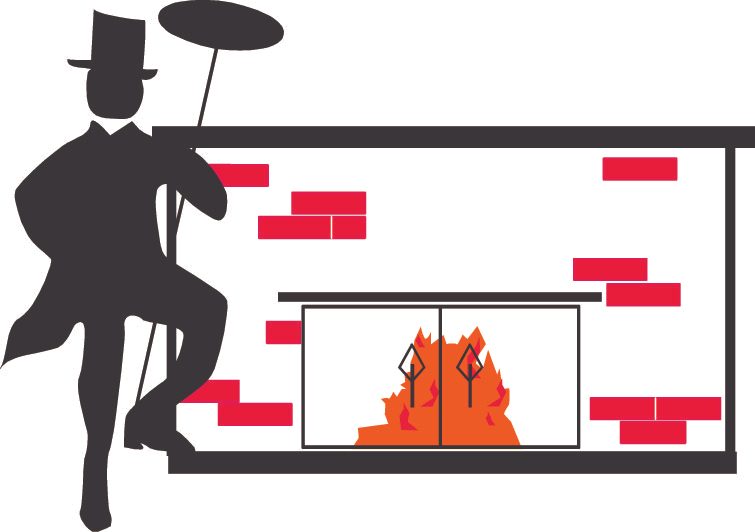A mechanical sweeping requires a set of special rods and a plastic head that spins on the end of the hand-held drill to remove Class-2 creosote, which has a crispy appearance.
In certain situations, we need to use a set of chains which we call Ro-kleening. These chains attach to special metal rods which then fit onto a hand-held drill in order to remove Class-3 creosote, which is a sticky, tar-like substance. We believe that this type of sweeping should only be used if there is no other recourse. This is a very aggressive cleaning technique and will reveal issues such as holes between the mortar joints or cracks in the flue tiles previously hidden by the creosote. However, this technique also has the potential to damage the interior structure of the flue and should never be done by someone who is untrained or uncertified.
A new product has recently come on the market, called Poultice Creosote Remover (PCR). This product is designed to completely remove Class-3 glazed creosote from clay flue tiles or stainless steel chimney liners. The PCR can be applied by brush for reachable places or can be pulled up the flue with a specially designed tool which is attached to a winch at the top of the chimney. PCR dissolves the creosote, absorbs it, then dries and falls down the flue. Any remaining PCR is then removed by a normal chimney sweeping. A PCR application takes two visits – one to apply the product and then a follow up visit to remove the dried creosote and any residual product left inside the flue.
